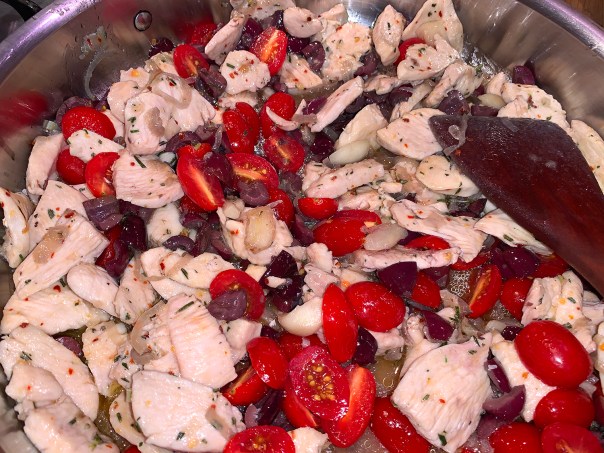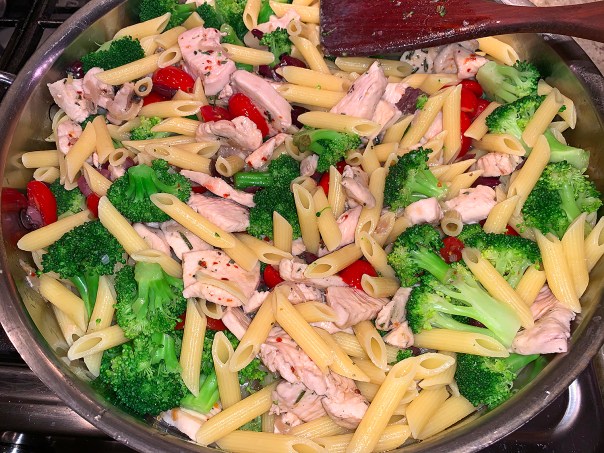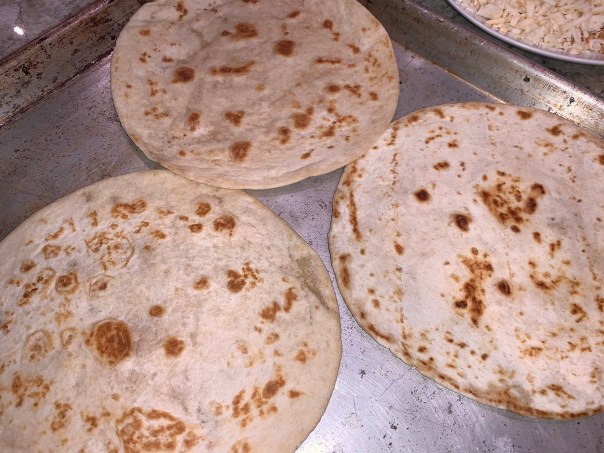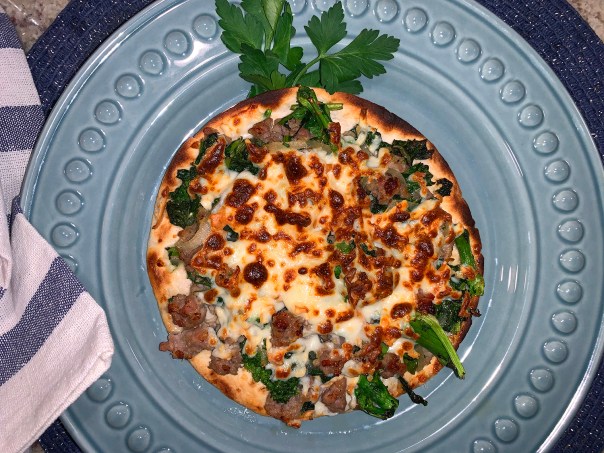The flavors of Greek moussaka were borrowed for this quick-one pan meal found on 177MilkStreet.com. Here, seared flank steak is finished with a rustic sauce-like side of eggplant, tomatoes, garlic and herbs. Crumbled feta cheese adds briny notes that contrast nicely with the sweetness of the vegetables and the richness of the beef. Your mouth watering yet?
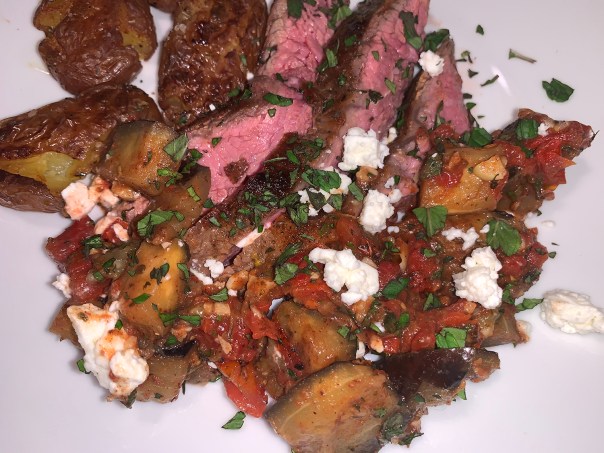
I thought the star of the show was going to be the gorgeous flank steak we got from the Amish Meat stand at the Farmer’s Market. And while the beef was a fabulous cut, it was truly enhanced further with the amazing tomato-eggplant ragu. Everything came together in a perfect marriage in just over a half hour.
We served ours with a side of roasted fingerling potatoes which were first parboiled, slightly smashed, brushed with EVOO and sprinkled with a bit of salt, pepper and dried oregano to tie in with the flavors of the main meal.
TIPS: Don’t drain the juices from the tomatoes. The liquid helps form the sauce and prevents the eggplant from drying out so that the pieces become silky-soft. When slicing the flank steak for serving, make sure to slice it against the grain for the tenderest texture.
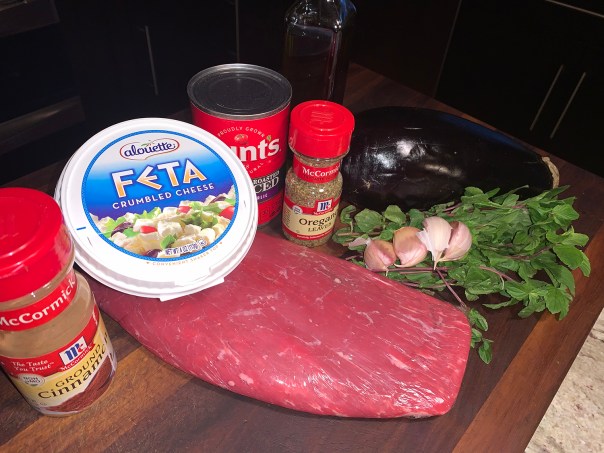
Flank Steak with Tomato-Eggplant Ragu
Ingredients
- 1½ lbs. flank steak, trimmed, halved lengthwise, then crosswise
- Kosher salt and ground black pepper
- 4 Tbsp. extra-virgin olive oil, divided
- 1 lb. eggplant, cut into 1-inch chunks
- 14½ oz. can diced tomatoes
- 4 medium garlic cloves, minced
- 2 tsp. dried oregano
- ¾ tsp. ground cinnamon
- ½ cup lightly packed fresh mint, chopped
- 1½ oz. feta cheese, crumbled (about ⅓ cup)
Directions
- Season the steak with salt and pepper. In a nonstick 12-inch skillet over medium-high, heat 2 tablespoons of oil until shimmering. Add the steak and brown on both sides, 6 to 8 minutes total, flipping the pieces once. (Our piece took 11 minutes to reach temperature.) Transfer to a plate and loosely cover with foil.
- In the same pan over medium-high, combine the remaining 2 tablespoons oil, the eggplant and 1 teaspoon salt. Cook, stirring occasionally, until browned and softened, 5 to 6 minutes.

- Reduce to medium and add the tomatoes with juices, the garlic, oregano and cinnamon. Cook, stirring occasionally, until thickened and the eggplant has begun to break down, about 5 minutes.
- Off heat, stir in any accumulated beef juices and half the mint. Taste and season with salt and pepper.

- Thinly slice the steak against the grain and place on a platter. Spoon the eggplant mixture on and around the steak, then sprinkle with feta and the remaining mint.


Recipe














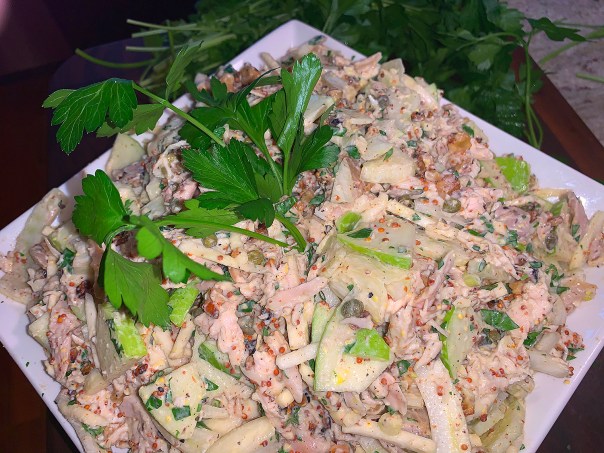























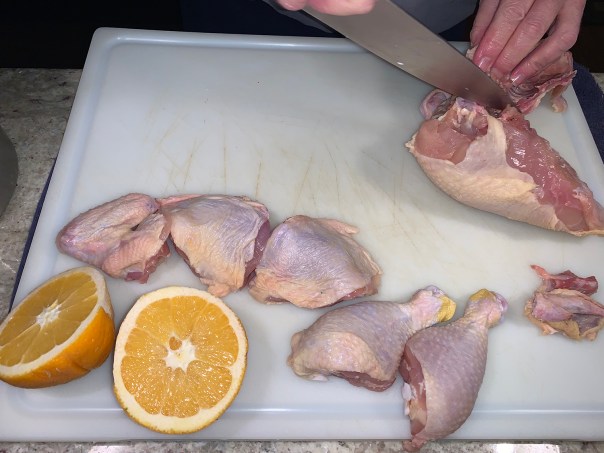




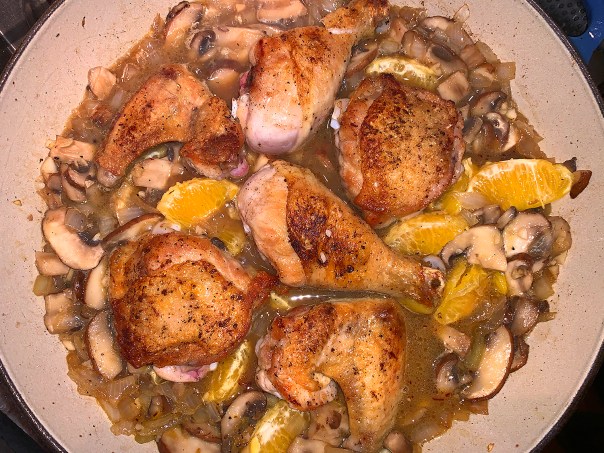





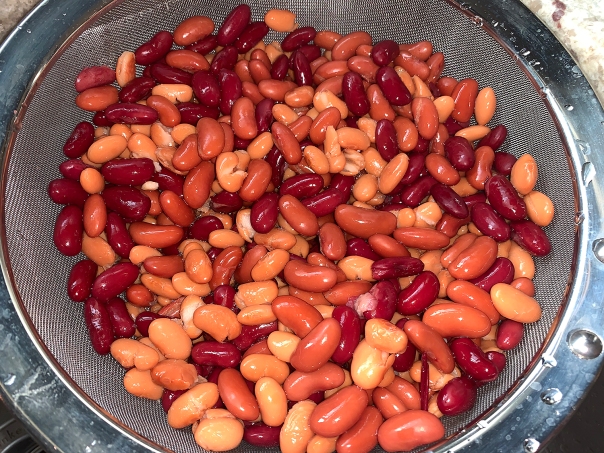

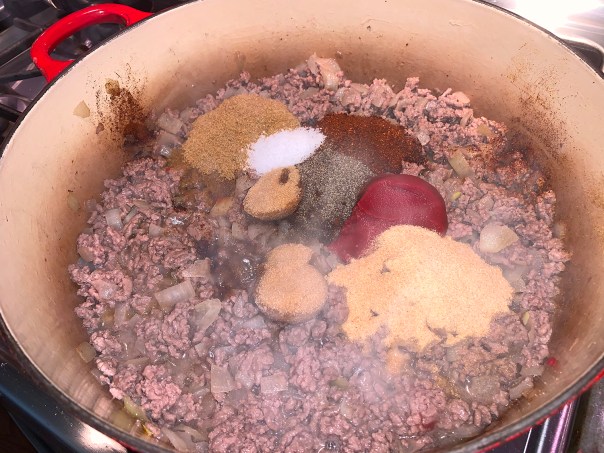













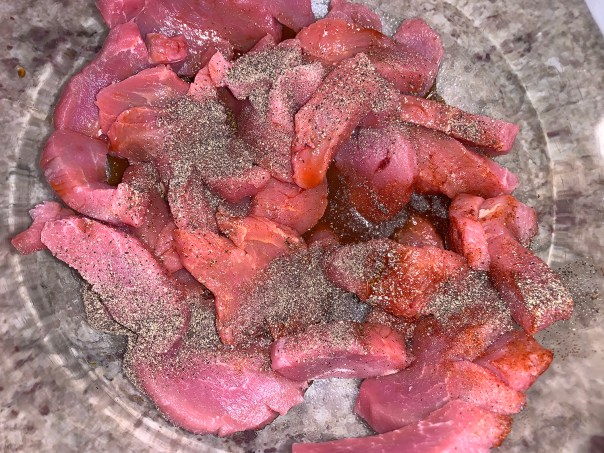


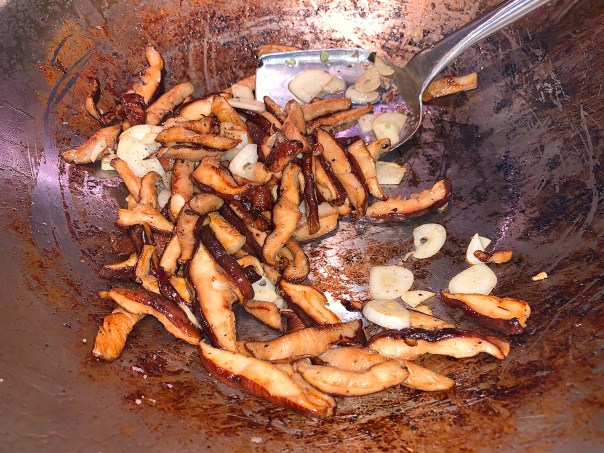





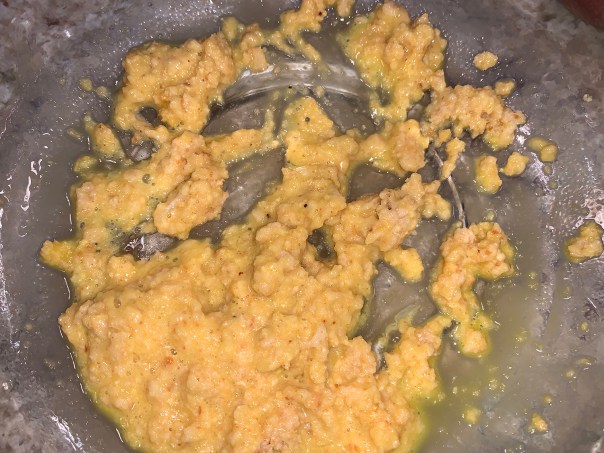


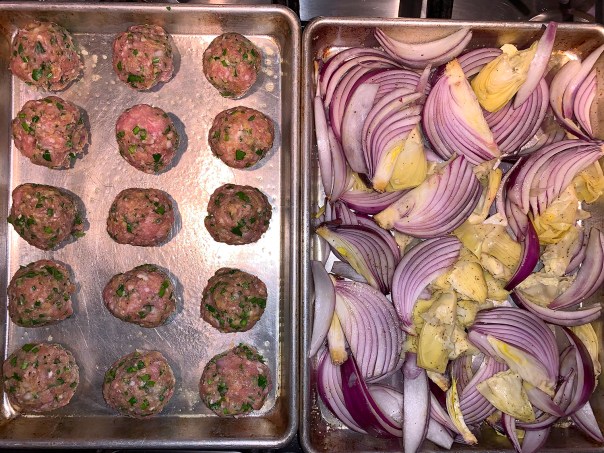






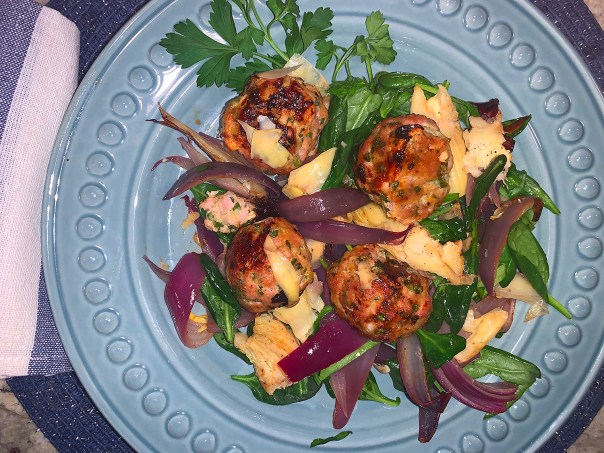



 Inside the Bar Ludeña “bar area” where we waited for an outside table, hung varying legs of aged Jamón, a kind of dry-cured ham that is typically included in Carcamusa.
Inside the Bar Ludeña “bar area” where we waited for an outside table, hung varying legs of aged Jamón, a kind of dry-cured ham that is typically included in Carcamusa.

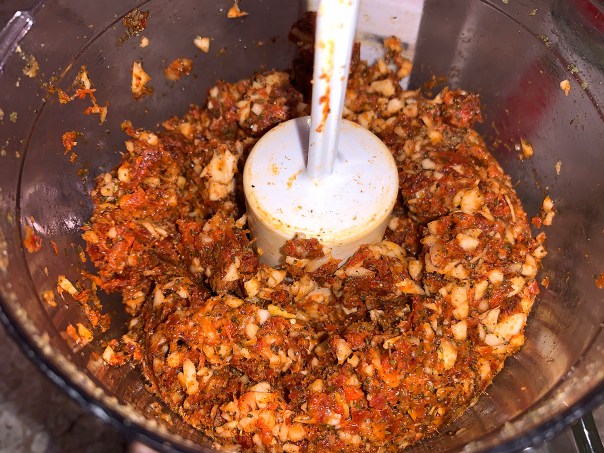





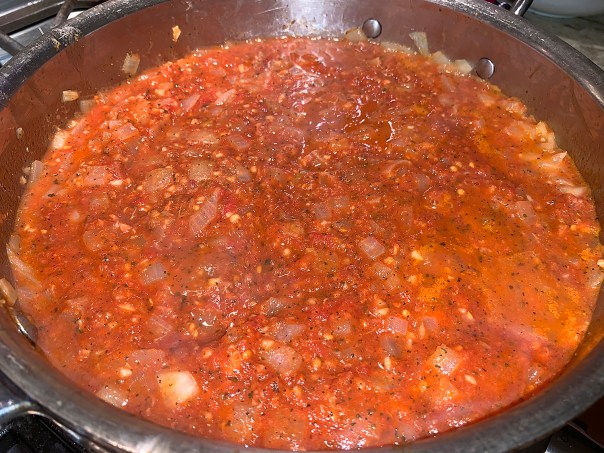




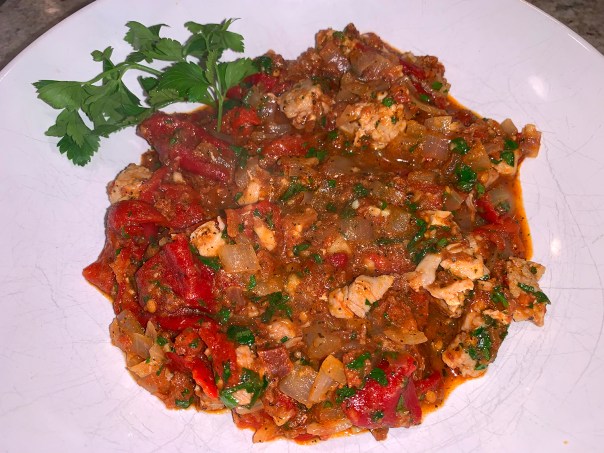

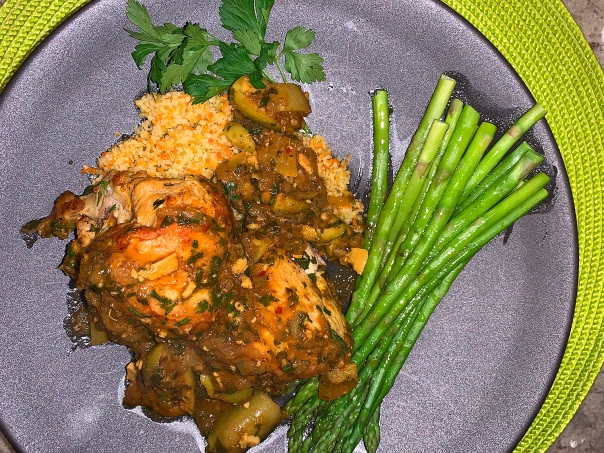 Couscous is traditional with this dish. We also included steamed asparagus.
Couscous is traditional with this dish. We also included steamed asparagus.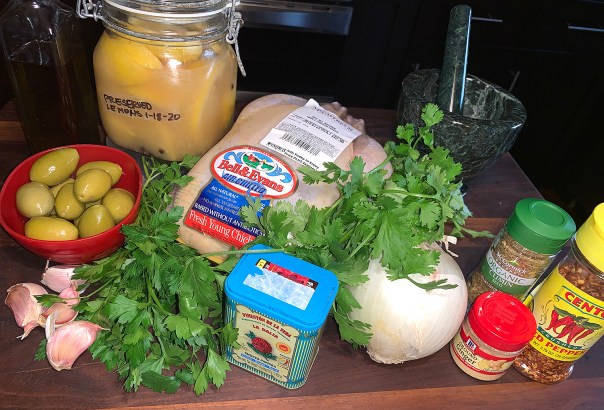




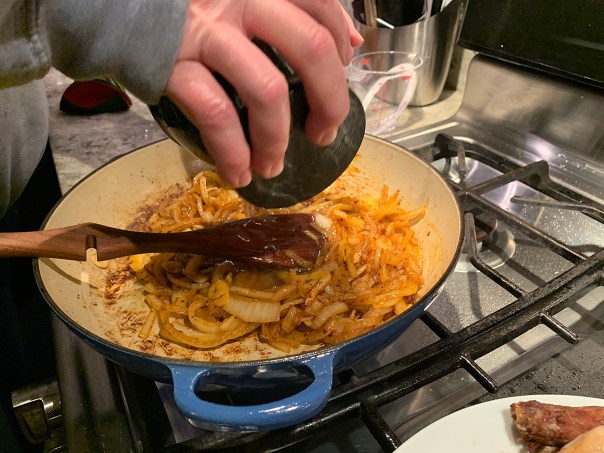
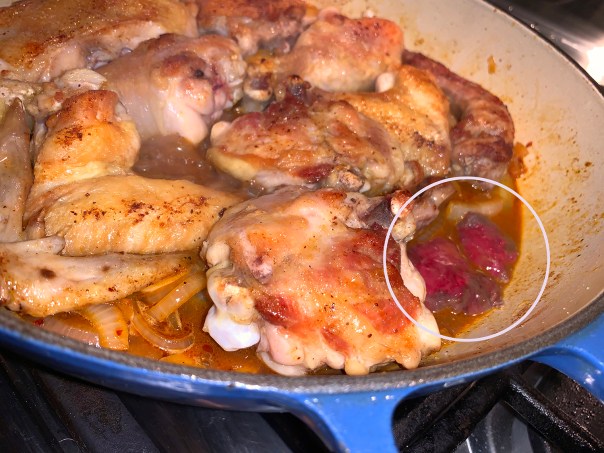


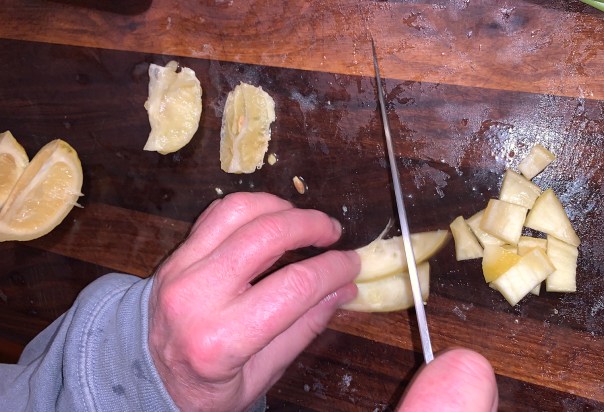
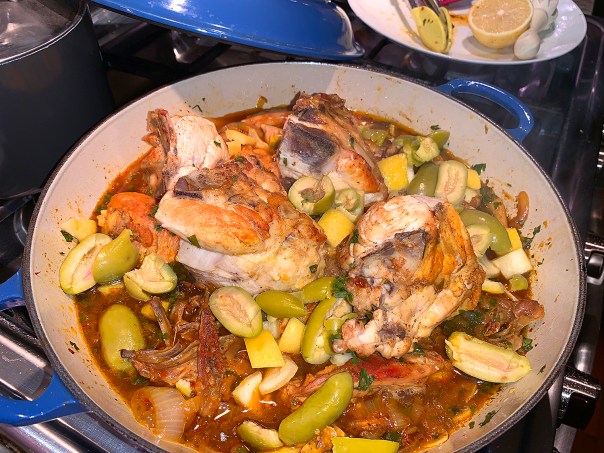




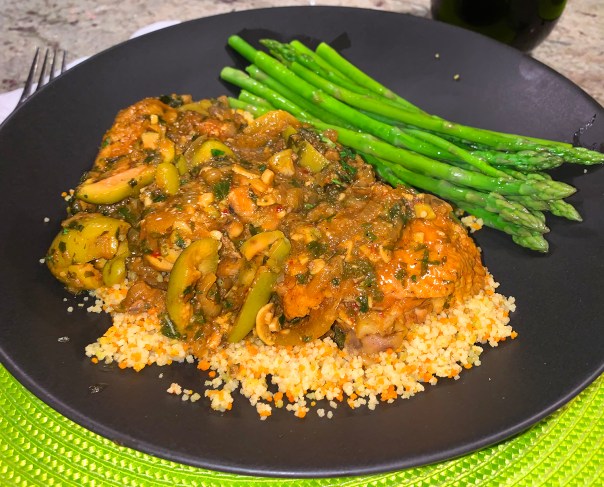



 Out of Control Roll—6 freshly made tuna, salmon, avocado and tobiko rolls with pickled ginger and wasabi paste
Out of Control Roll—6 freshly made tuna, salmon, avocado and tobiko rolls with pickled ginger and wasabi paste Gyoza—6 crispy, pan-fried pork dumplings (they are also available with vegetables)
Gyoza—6 crispy, pan-fried pork dumplings (they are also available with vegetables)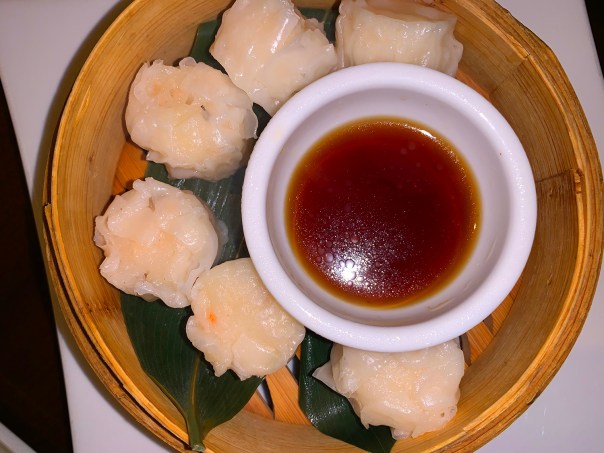 Shumai—6 delicate, melt-in-your mouth, steamed shrimp dumplings
Shumai—6 delicate, melt-in-your mouth, steamed shrimp dumplings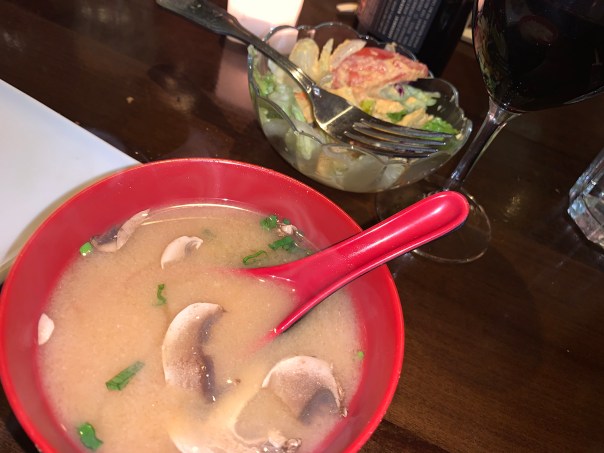
 Roasted Long Island Duck Breast—Tender slices of duck breast, caramelized asian pear, Japanese eggplant, scallion, bathing in a sweet sake-soy reduction and served with a side of coconut flake crusted taro potato tempura sticks and a choice of white or brown rice. No surprise that this was Russ’s option!
Roasted Long Island Duck Breast—Tender slices of duck breast, caramelized asian pear, Japanese eggplant, scallion, bathing in a sweet sake-soy reduction and served with a side of coconut flake crusted taro potato tempura sticks and a choice of white or brown rice. No surprise that this was Russ’s option! Chicken Yakitori—Plump pieces of both white and dark meat chicken, skewered with bell pepper and onion slices served in a with teriyaki sauce and paired with a little bucket of tempura vegetables and that choice of rice. Lynn’s selection.
Chicken Yakitori—Plump pieces of both white and dark meat chicken, skewered with bell pepper and onion slices served in a with teriyaki sauce and paired with a little bucket of tempura vegetables and that choice of rice. Lynn’s selection. Lobster Dynamite Roll—An artfully plated signature roll with Maine lobster, avocado and mango inside, topped with spicy tuna and sweet chili sauce on the outside. Julia kept going back to this on the menu, and finally ordered it—she was not disappointed.
Lobster Dynamite Roll—An artfully plated signature roll with Maine lobster, avocado and mango inside, topped with spicy tuna and sweet chili sauce on the outside. Julia kept going back to this on the menu, and finally ordered it—she was not disappointed. Ice Cream Tempura—A trio of fried ice cream flavors (chocolate, vanilla and strawberry), paired with orange puree and a coconut scented white chocolate sauce. Shared by father and daughter.
Ice Cream Tempura—A trio of fried ice cream flavors (chocolate, vanilla and strawberry), paired with orange puree and a coconut scented white chocolate sauce. Shared by father and daughter.



